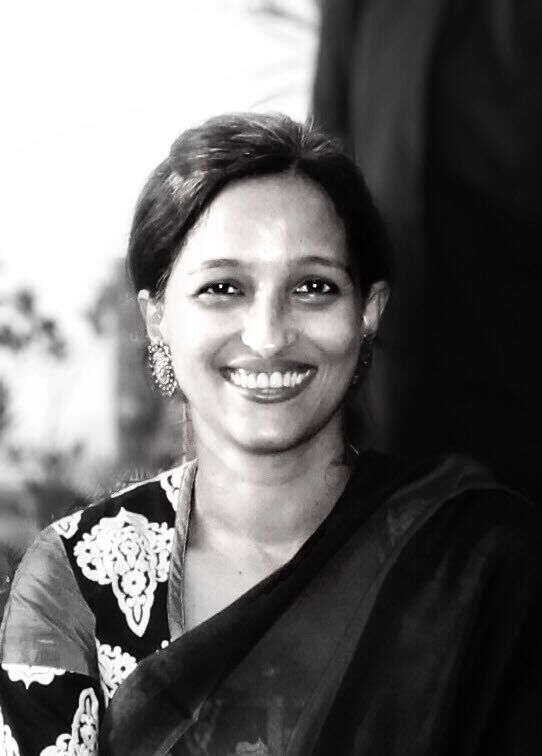Amitabh Behar is the CEO of Oxfam India. He is a civil society leader and the former executive director of National Foundation for India. He is recognised for his work on governance accountability, social and economic equality, and citizen participation. He also chairs the boards of Amnesty International India, Navsarjan and Yuva.
In this conversation, he talks about how civil society in India has changed, what the implications of those changes are, and what the future looks like.
You have spoken about how there seem to be principle differences between the older civil society and the one we see today; could you tell us more about what this looks like, and what its implications are?

This is a moment of dramatic and quick changes. One change that has serious implications on the entire development community is the creation of two parallel sectors: one represented by older nonprofits (including the social movements and mass organisations) and the other, by newer ones, located more in the market (in terms of the principles underlying their world view) and in technology spaces. And the difference between them is one based on principles, in the way in which they approach development–a systemic, integrated social science approach versus a techno-managerial approach.
The older nonprofits look at the society through a lens of the systems at play, the complexity of it, the interdependency of the various factors involved. Whereas with the new age nonprofits, we are seeing an attempt to have technical and management solutions to very complex social questions. This really is the primary and most critical fault line. And it’s this shift that is playing out in multiple ways.
When you look at the world through a techno-managerial lens, the real world, which exists in all its complexity, gets left behind. You end up creating a bubble where technical solutions to complex problems seem possible. And the conversation–be it about solutions or about innovation–remains limited within that bubble. Those bubbles get celebrated and more investments follow into the bubble making it bigger, till it bursts and in the meanwhile, move on to creating other new bubbles.
So you look at a set of problems that are ‘solve-able’ and within your domain–and you spend all your money, attention and resources there. It is an almost artificial separation of the problem from its surroundings, systems and location where it is embedded. And you are not engaging with the larger problems of the system/society.
When you look at the world through a techno-managerial lens, the real world, which exists in all its complexity, gets left behind.
For example, you may be innovating on sanitary napkins, and reducing their unit cost from four rupees to two. But while doing so, you may not be addressing something like how caste or social norms may impact usage. It’s not that innovating on sanitary napkins is not important, but focusing on that alone not only leaves out the larger problems, it also makes us completely unable to deal with the impact of politics and economics on social issues; which leads to bursts of apparent success but soon it becomes business as usual without any serious change.

This approach essentially creates band-aid solutions; resolving at best, the manifestations of poverty, the manifestations of issues of inequality, but not the causes.
At the end of the day, I think what we need to ask ourselves is, ‘What is the human project?’ If the human project is about food and shelter then the techno-managerial approach might reach there. But I believe it is about dignity and justice, and that requires a wider and more integrated world view. History has taught us that food and shelter has never ended misery, slavery, exploitation, un-freedoms and indignity.

“One change that has serious implications on the entire development community is the creation of two parallel sectors: one represented by older nonprofits, and the other, by newer ones.” | Photo Courtesy: RaySawak [CC BY-SA 4.0], Wikimedia Commons
Why do you think we are seeing this very distinct shift towards a techno-managerial approach?
Today’s decision makers–be they funders, nonprofit leaders, or government officials–look markedly different from those of the 1950s and 60s. Consider the profile of Indian Administrative Service (IAS) cadre–the most important people in our country in terms of policy. Forty years ago, most of them had a liberal education, where the appreciation of art and cinema, and social responsibility were viewed as necessary dimensions in the pursuit of knowledge.
Even the social sector and in particular, philanthropies, are now increasingly being run by management and technology driven professionals.
This is in contrast to the officers in the last 20 odd years. A very large number of these civil servants now come from the IITs and other engineering courses, and have been schooled in technology or management. The current public narrative even privileges this education and builds an arrogance of markets and technology as answers for all issues, including unfortunately our quest for knowledge.
These officers with very limited understanding of history, sociology and caste or gender, do not even use these frames to understand the problems and often think they know how to solve development problems as seen through a technical lens. This shift is visible in all sectors, surprisingly even the social sector and in particular, philanthropies, are now increasingly being run by management and technology driven professionals.
There is therefore a large shift in the activities that are getting funded, driven entirely by the interests of the newer decision makers. New donors and policy makers are excited about the new nonprofits–the ones that develop techno-managerial solutions because they understand it and believe in it. And they often do not have the patience or even the ability to understand the old systemic way of approaching problems.
As a result of this fundamental shift, the earlier generation of nonprofits are struggling because they lack resources and are unable to communicate to a new set of decision makers who don’t understand their language of social justice and systems change.
Had we continued to invest in the old civil society in a bigger way, the right wing upsurge that the country is seeing today could have been challenged.
Many of our colleagues from the 1970s and 80s were driven by ideas of change and of human dignity. The two fundamental things that old civil society did was to challenge power and create new ideas for transformational change. Both these primary roles are now neglected and today when something like vandalism and vigilantism happens against Padmavati (and all other kinds of rights violations including lynching of muslims in the name of cows), who will stand up and says this is unacceptable? The older guard would probably have but we as a sector have weakened them.
I believe that had we continued to invest in the old civil society in a bigger way, the right wing upsurge that the country is seeing today could have been challenged. There is a principle political contradiction between civil society and the ethos of any right wing force. And we have contributed to this shift where our ability to protect and nurture the biggest wins of the last two centuries–namely, freedoms, rights and human dignity–is far weaker, while we think in a bubble of ‘solving and fixing social problems’. People’s ability to think critically and ask these fundamental questions is shrinking.
What does the future look like, for our sector and country?
It’s not all gloomy; there is reason to be optimistic. The optimist in me says that we are on the verge of people recognising that this thinking cannot last. If history is any guide, in the last two hundred years whenever the madness or exploitation has reached these levels, there has been serious change. I am fairly confident that alternatives will emerge and they will gain traction. As Martin Luther King famously said ‘the arch of history is long but bends towards justice’.





